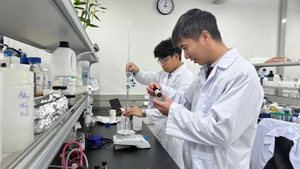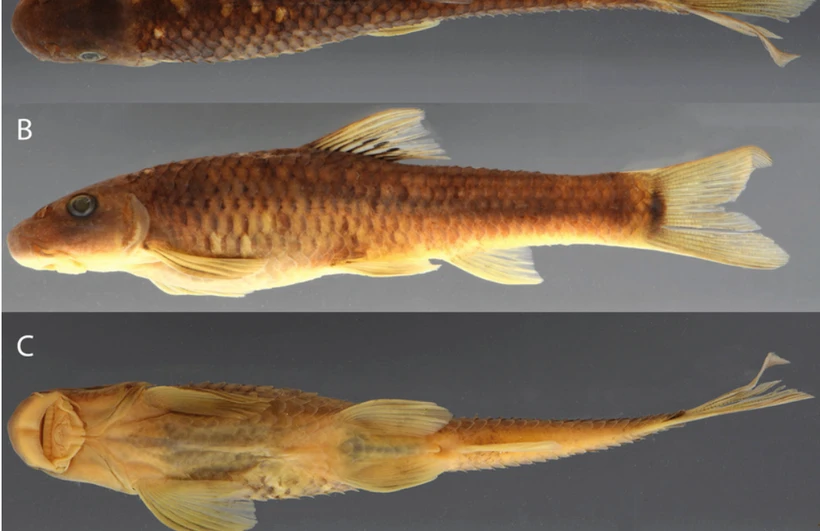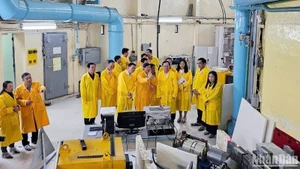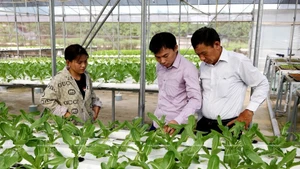Interesting museum of lotus
The centre is home to around 215 lotus species, 65 of which are native species while the rest are imported or created from breeding methods.
Visitors to the centre can explore lotus blossoms in various colours from white to pink to red, as well as single petal lotus and multi petal lotus.
There are nearly 20 different varieties of white lotus alone, such as the ancient lotuses originating from the imperial city of Hue and the northern province of Bac Ninh, and the ‘bi ngan’ variety. Although they have similarities in their appearance, each lotus species has its own beauty and characteristics.
According to engineer Nguyen Van Thuy, he and his colleagues have to wade in the lotus ponds every day to track the growth stages of each lotus flower and develop new breeding varieties. Their observations are then recorded into scientific reports.
Although the centre has only been in operation for three years, but it has established itself as a living museum of lotus in Vietnam. The foundation and development of the centre is significantly contributed by engineer La Tien Hiep.
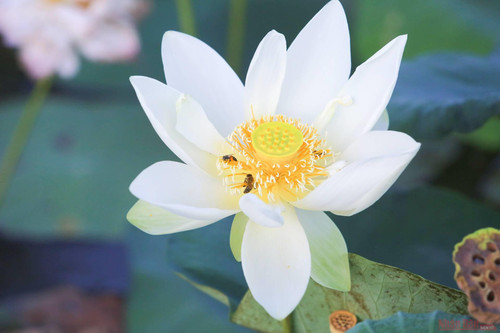 |
| There are nearly 20 different varieties of white lotus at the centre |
Hiep originally worked at the Vietnam National University of Agriculture, majoring in research on fruit trees. During his career, he has travelled to many places from south to north, and he was very impressed by the beauty of the lotus.
He also found that people can make use of almost every part of the lotus plant, from the flowers and leaves to the tubers and seeds. Besides fresh flowers, seeds and roots, farmers can produce various types of lotus-related products such as essential oil, cosmetics, wine, milk, tea, and other beverages and food.
Therefore, Hiep came up with the idea of conducting in-depth researches on lotus in order to encourage the cultivation of lotus among farmers, especially in low-lying areas which have unfavourable condition to plant other crops.
His first research on lotus was conducted in 1999. He then found that although the Vietnamese people are so familiar with the lotus, there is very little research on this plant, and documents about the lotus are mainly literary works. This request Hiep to invest much time and effort in his work.
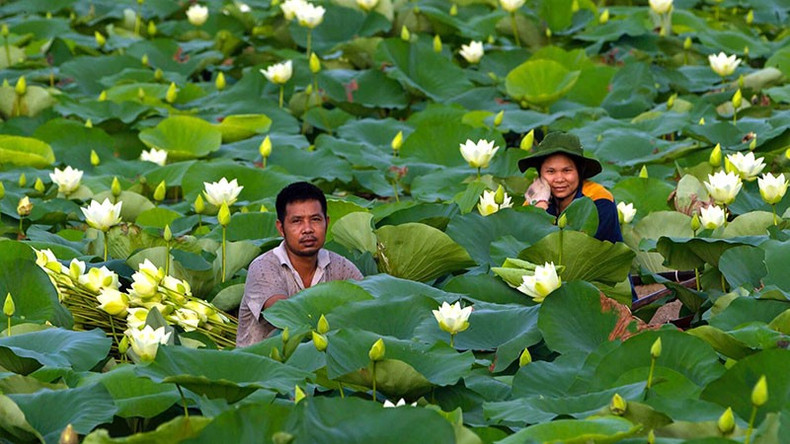 |
| Engineer Nguyen Van Thuy and his wife sit next to a lotus pond at the centre |
Aspiration to develop brand for Vietnamese lotus
The Centre for Experimental, Research and Development of Lotus Genetic Resources has 10 hectares of water surface, which is divided into 16 small ponds to facilitate research and breeding of new lotus varieties.
It takes at least five years of research to breed a new lotus species, from combining the dominant genes of the parents, to maintaining the growth of the offspring and ensuring that they meet the standards of petals, colours, and fragrant scents.
Depending on the purpose of breeding flowers, for arranging, making tea, or getting seeds, engineers will select parent pairs to choose the most suitable characteristics of the offspring. However, this is like a "dice game" as the outcome of the breeding is still somewhat unpredictable.
Engineers at the centre are working to create lotus species which blossom during Tet (Lunar New Year festival) as lotus symbolises hope for peace and purity in the soul, this is in accordance with people's aspirations when Tet and spring comes.
The centre’s research outcomes have been transferred to farmers to help them increase value chains of lotus products.
In addition to its cultural and aesthetic beauties, the lotus has high economic value. Engineer La Tien Hiep suggested that to promote its economic value, it is necessary to plan large-scale and stable lotus growing areas and encourage investment in research and cultivation of lotus plants.




